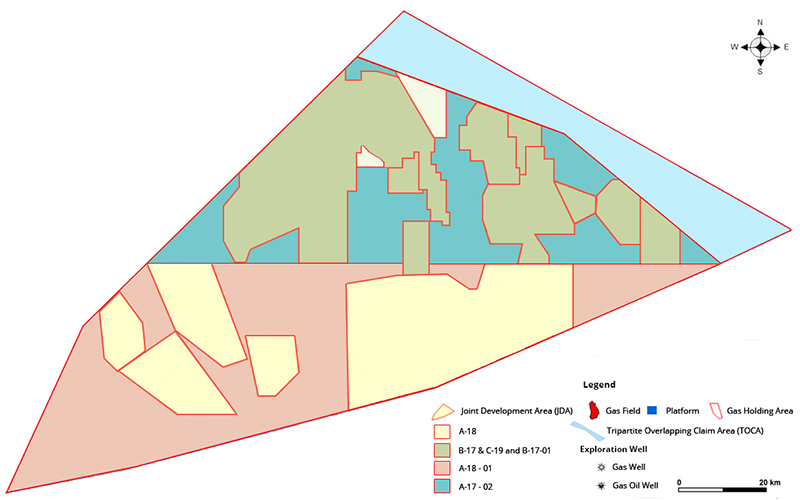

What You Need To Know
Under the MTJA Agreement: The JDA is geologically located in the North Malay Basin in the offshore lower part of the Gulf of Thailand. The North Malay Basin is a Neogene intracratonic rift/sag basin, elongated in shape and oriented in north-south direction at the northern part and gradually shifted to the northwest-southeast direction at the main portion. It consists of provinces of margin platform, margin ramps and central basinal area or depocentre. Geochemical studies and well results has proven that the area have a prolific source rock that can generate Hydrocarbons for this area. Hydrocarbons within the Malay Basin are found in all of the above provinces. Generally, the North Malay Basin contains thick sediments in excess of 8 km deposited since the Oligocene. Tecto-stratigraphically, the basin is divisible into a Pre-, Syn-, and Post-rift Megasequence. The Megasequence is further divisible into Upper and Lower Post-Rift Megasequence and in some cases in the north divisible into Regional Sagging Megasequence. The structural styles in the JDA are controlled by the movement of normal faults, both pure extensional and transpressional tectonics. The extensional tectonics during Oligocene and Early Miocene caused tilted fault blocks, horst and graben features and anticlinal features against faults. The trap style is mainly fault dependent while widespread marine shales provide a good regional top seal. The intraformational shale in the prospective sequence also provides a very good top seal for individual reservoir package.
